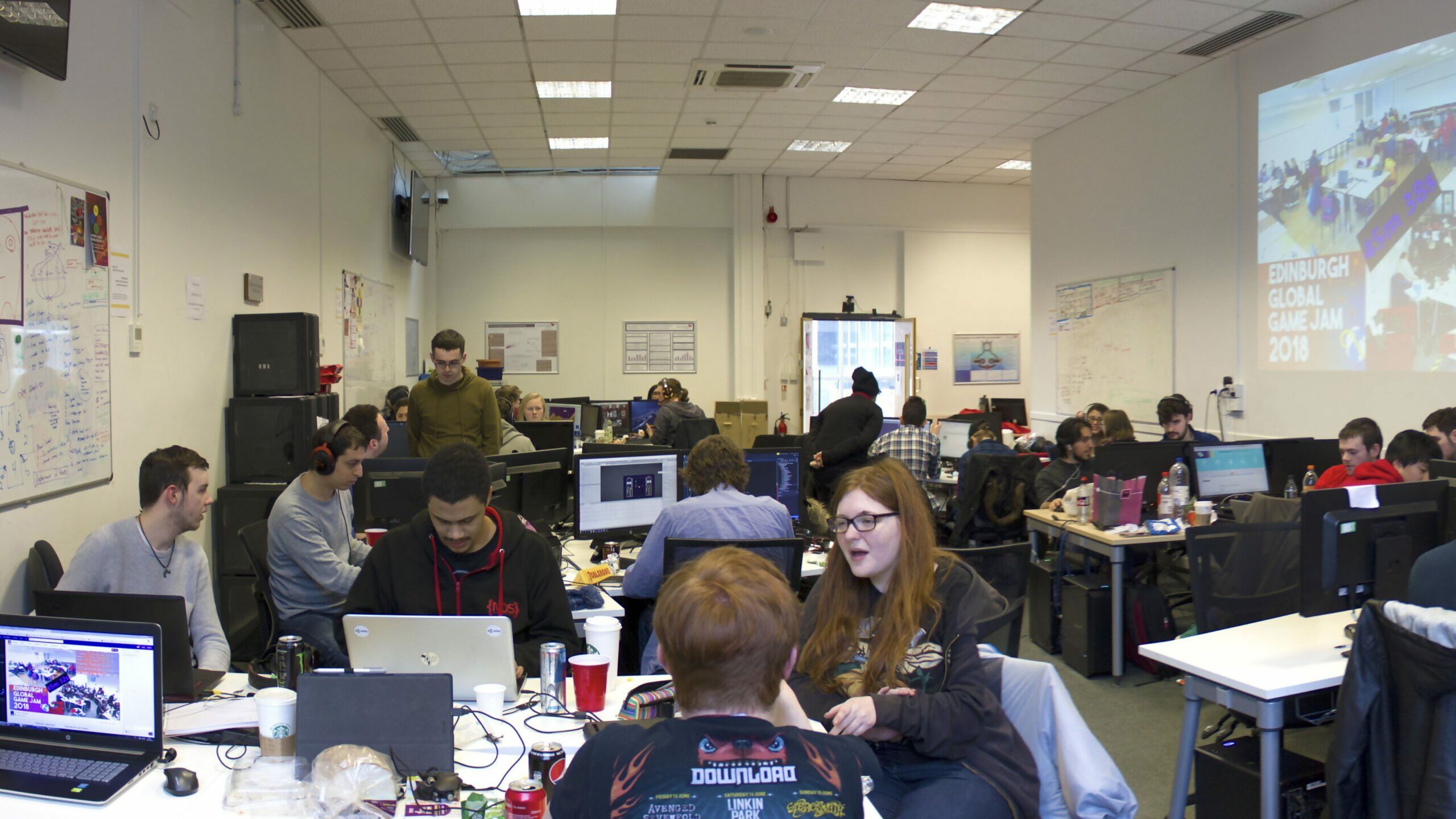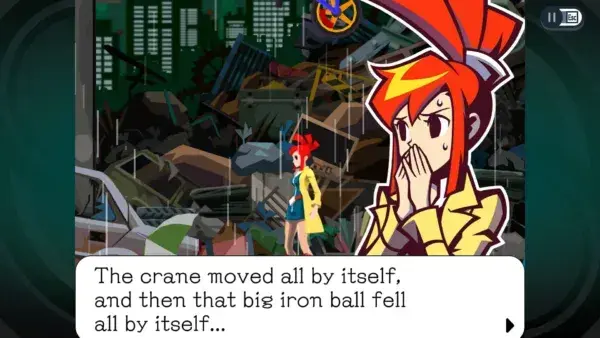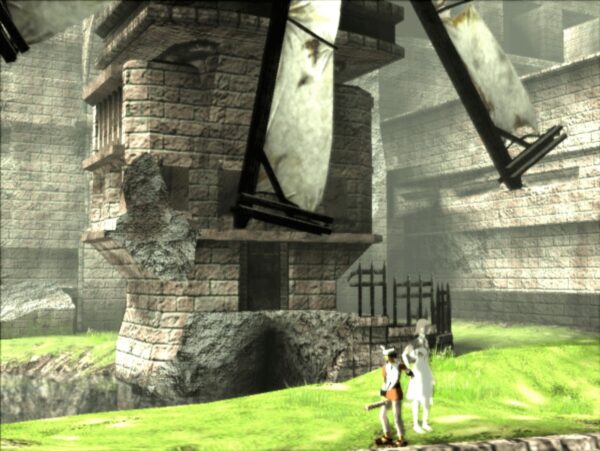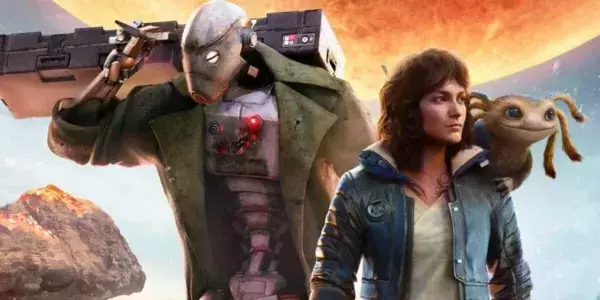
Like most good ideas, game jams are an easy enough concept to grasp: they’re events where developers get together and attempt to create a working game within a compressed period of time. Modern game jams can be traced back to March 2002, when developers Chris Hecker and Sean Barrett launched Indie Game Jam 0 in Oakland, California. The event was a small one, with just 14 participants crammed into a tiny office space, but even then, the experimental possibilities were plain to see: among the twelve games produced at the four-day jam were such curious delights as Angry God Bowling – which involves knocking over crowds of people with a gigantic ball – and Worship, a riff on Missile Command with a similarly religious theme.
Just weeks after Indie Game Jam came Ludum Dare (Latin for ‘to give a game’), founded by Geoff Howland and later passed over to team member Mike Kasprzak. Ludum Dare Zero took place in April 2002 and established a strict 24-hour time limit, though this increased to 48 hours at subsequent events. Like most game jams, each event follows a similar template: first, a theme is chosen – one such theme was based on the Zelda quote, “It’s dangerous to go alone” – then there’s an intense period of design and development, and then participants are given time to vote on the winner. Ludum Dare is a virtual jam, so competitors don’t have to be in the same physical location; instead, participants are encouraged to provide a live stream of their work, or take regular screenshots which are later compiled into a time-lapse video.
Other game jams, like Copenhagen’s Nordic Game Jam, draw coders and keynote speakers to Copenhagen for a live, two-day event. But whether they take place in exhibition centres, tiny rooms, or online, game jams are designed with the same goal in mind: to quickly and efficiently dream up and test out new game ideas. It’s perhaps no accident that video game companies also use game jams as a proving ground; Frontier Developments, creators of Elite Dangerous, have long held ‘Game of the Week’ jams for its employees – a process which resulted in, among other things, the WiiWare title LostWinds. Tim Schafer’s Double Fine Productions often hold events called Amnesia Fortnight – two-week prototyping exercises that test out new concepts. Costume Quest, Stacking, and Iron Brigade all resulted from developers splitting into small groups to create new games.

One of the Wii’s most delightful titles, LostWinds began as an internal game jam at Frontier Developments.
A particularly unusual jam took place at UK developer Rebellion in 2017. The company’s publishing section had just released Nate Crowley’s book 100 Best Video Games (That Never Existed), based on a surreal Twitter thread; for each “like” he received on the platform, Crowley wrote a description of a game that didn’t exist. Over the course of a two-day jam, employees in teams of three then created games based on those descriptions. Seapuncher, Pub Fighter Architect and Wrestle Chess were among the imaginatively titled games brought to life during the event.
Game jams are, therefore, an established part of the games industry by now – and what’s more, they’re growing. Ludum Dare’s first game jam attracted just 18 entrants; by 2018, it was receiving upwards of 2500 submissions per event. Meanwhile, the number of game jams taking place around the planet is also building.

A game jam project that eventually became a commercial release – and a cult favourite: Goat Simulator.
Organised Chaos
Based in California and growing in popularity over the past decade, Global Game Jam was directly inspired by the groundwork laid by the likes of Nordic Game Jam and Ludum Dare. According to its executive director Seven Siegel, the Global Game Jam “caught on like wildfire,” with its debut event in 2009 attracting 1650 participants across 53 locations around the world. Since then, the numbers have increased, with events now held in such varied places as Kenya and Kazakhstan.
“Global Game Jam 2018 had 42,811 participants across 803 locations in 108 countries,” Siegel enthuses. “Over the past decade, we’ve seen Global Games Jam start entire game development communities – we want to help every country have its own game dev scene.”
Each Global Game Jam takes place over a weekend, with themes for each event chosen “in secret by an appointed group of committee members,” according to Siegel. “We give them free rein to come up with the best theme they can. Even I don’t know what the theme is before the keynote comes out – which is good, because I’m bad at keeping things hidden. Personally, the more abstract, the better, for me. I love it when a single sound clip or image can evoke such different games.”

Another venue for Global Game Jam 2018: Universidad Pontificia Bolivariana in Medellín, Colombia.
Siegel isn’t just a hands-off executive, either, and has regularly taken part in jams himself. “I make it a point to participate each year – I need to remember what it’s like on the ground floor,” he says. “This past Global Game Jam, we created a ridiculous VR climbing game influenced by (Bennett Foddy’s indie platformer) Getting Over It. Mechanically, the game played terribly, and we purposefully made the trailer so unrelated to the game no-one understood it when we presented. Even though the game was silly beyond belief, the experience was great, and late nights laughing and connecting with the team is a memory I’ll hold on to.”
Most of all, Siegel is keen to point out just how useful game jams are for quickly prototyping new and sometimes curious ideas. “Goat Simulator is always my go-to example of a company using an internal jam to come out with a success,” Siegel says. “It was ridiculous and fun right from the beginning. Jams are great ways to test single mechanics to see if they have that innate fun factor. If the gameplay loop is fun from only 48 hours of development, you know you have a winning title.”

Generating ideas using the theme ‘Transmission’, Edinburgh’s participants for Global Game Jam 2018 are hard at work.
Full of Beans
In July 2018, indie developer Andrew Reist took part in the brilliantly named Miss Myu’s Coffee Jam, where he made a game called Coffee Bug. It sees players collecting drinks to take back to a café, though said drinks are also handy for throwing at enemies. For Reist, game jams are a “great way to find interesting developers and force yourself to hit a deadline” – which is why, since he started his studio, Eggnog, in January 2017, game jams like Coffee Jam and Ludum Dare have become a regular fixture on his calendar.
“I usually try to finish ahead of time, but I almost always end up doing some work on the last day,” Reist says of his game jam experiences. “It’s tempting to make the most of every minute, but it’s not a healthy habit to get into! Since my first Ludum Dare – which was very stressful – I’ve forced myself to be a little more relaxed. Jams are self-imposed, so if you miss the deadline, it’s not a big deal. Cut your design doc in half, stay hydrated, and have fun.”

Andrew Reist continued to develop his drink-fetching (and throwing) action game Coffee Bug after the jam had finished.
Sky’s The Limit
Taking place in August 2018, the Demake Jam is based exclusively on the challenge of taking a modern game and distilling it down to its essentials – here, detailed 3D models become pixel art, and vast open worlds are reworked as flat 2D environments. Among last year’s entries, for example, was Low Mem Sky, a demake of Hello Games’ indie space sim, No Man’s Sky. As we saw in Wireframe issue 12, Low Mem Sky, made by developer Paul Nicholas, manages to pack a remarkable number of space sim features into the PICO-8 – a virtual console defined by its 32kB cartridges and 128×128 pixel display. More impressively still, Nicholas managed to create the initial build of Low Mem Sky in just seven days.
“Game jams can provide a lot of exposure,” Nicholas tells us. “Hello Games were even kind enough to share a tweet of Low Mem Sky, and included a video in their newsletter. The game has acquired quite a lot of fans, which I’m very grateful for. The challenge I now find is learning to say ‘no’ to game jams – as beneficial and fun as they may be, they can be an all-too-tempting distraction from working on larger projects. The trick is to find a good balance.”

Paul Nicholas’ 32kB space sim Low Mem Sky in action.
After-Party
Development doesn’t always end with a game jam’s deadline, either – creators can often carry on refining their work for weeks or even months afterwards. “I worked on Coffee Bug for a solid month after Coffee Jam,” says Andrew Reist. “I wasn’t happy with the music, balancing, and enemy behaviour. Sometimes a jam doesn’t provide enough time to get the game to where you want it to be.”
Paul Nicholas, meanwhile, finished work on Low Mem Sky several months after the original Demake Jam, with its final update emerging in December 2018. “Whether I do further work tends to depend on a few factors,” Nicholas explains. “How close to my original ‘vision’ did I get, how much did I enjoy making the game, and how popular or well-received was it? For a few of my jam games, I plan to take them further as paid or commercial titles. Due to the unexpected popularity of Low Mem Sky, I’ve started developing a new game in a similar vein, from scratch in MonoGame, so that I can target mobiles as well.”
As Seven Siegel reiterates, though, game jams have also resulted in several commercial successes in their history so far. “My favourite success stories are Surgeon Simulator from Bossa Studios, and Keep Talking and Nobody Explodes by Steel Crate Games,” he says. “The teams came up with a great idea at Global Game Jam, it went viral post-jam, and now both are game studios working on great projects. And Fru, created in 2014 as a platformer that uses the Kinect – it ended up getting released on the Xbox One. It’s the kind of fun that can be created when you start designing outside the box. These are great examples of things that could only be created at a game jam.”

Global Game Jam executive director, Seven Siegel.
Jams vs Crunch
With so much talk in the industry right now about the perils of ‘crunch’, does the culture of game jams – with their built-in deadlines – encourage people to push themselves too far?
Game Jams are, Siegel points out, “challenge-by-choice”, while crunch time is generally understood to be mandatory overtime enforced by a larger company. “Game jams are soul-giving, crunch time is soul-taking,” Siegel says. “Saying game jams are like crunch is like saying Sonic and Mario are the same game. Yes, on an outer description, working on a game for a short period of time, cramming to get everything in, seems similar. But game jams are optional and encourage participants to create whatever they want. Participants can go as slow as they want or need to.”
“Game jams are meant to encourage small, quick creations – projects which shouldn’t require late nights or self-destructive work habits,” adds Reist. “As for crunch in the triple-A industry – it’s a deeply rooted issue.”





